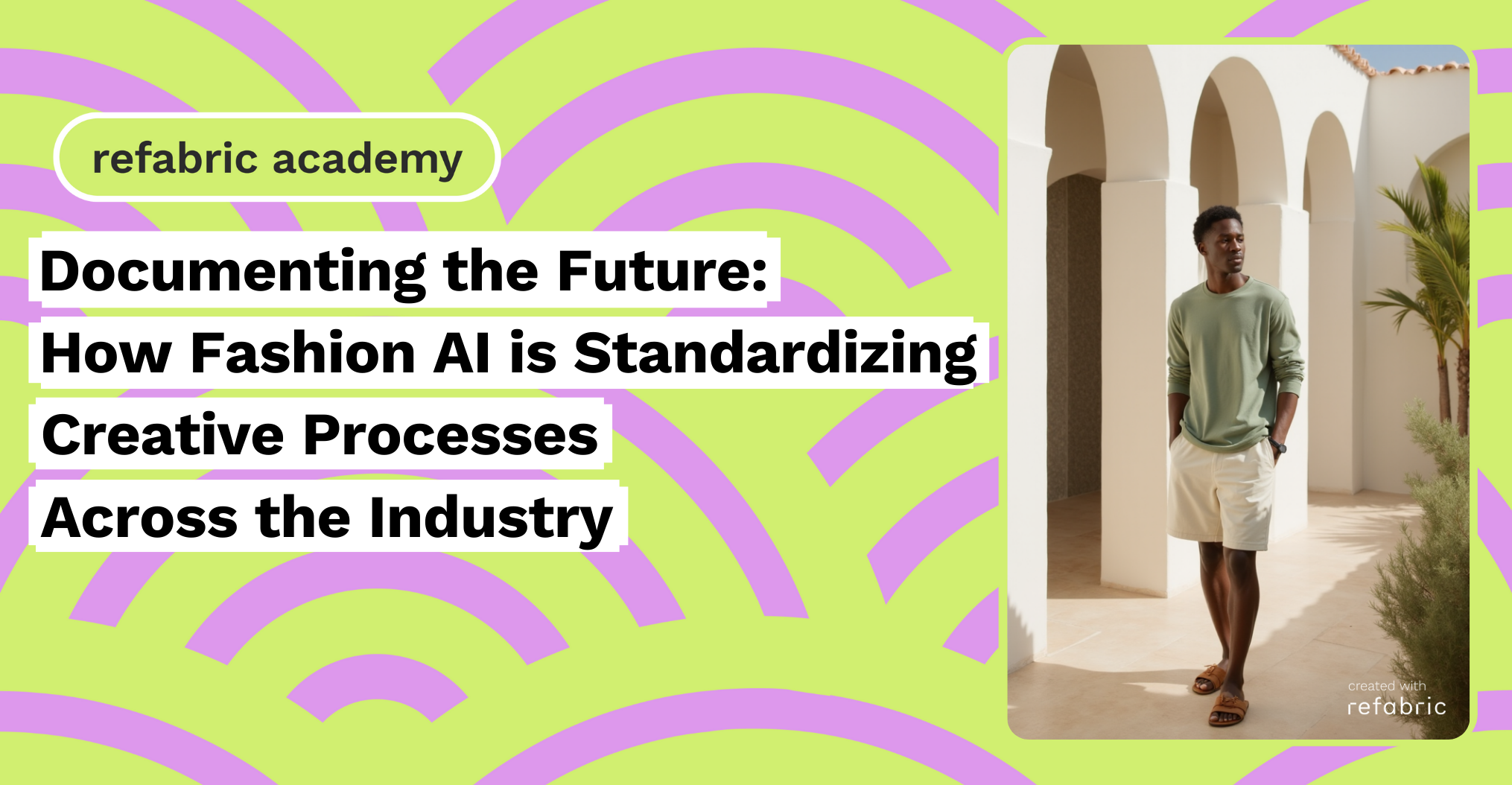Fashion AI is no longer just a trend, it’s a transformative force reshaping every step of the creative process, from initial concept to final sample. As generative technologies become embedded in daily workflows, brands are facing a new challenge: how to establish clear standards around the use of AI. The solution? Documentation.
Forward-thinking fashion brands are now requiring teams to record how fashion AI is used in every stage of product development, design, photo shooting, inventory management, and sampling. What was once an informal creative flow is becoming a structured process, with transparency and traceability taking center stage.
Why Documentation Matters in the Age of Fashion AI
Fashion AI accelerates the design process, unlocks new levels of creativity, and streamlines everything from sketching to sampling. As these tools become an integral part of how teams operate, documentation helps ensure consistency, alignment, and clarity across departments. It transforms what could be a fragmented digital workflow into a cohesive creative journey.
By encouraging teams to log their design iterations, prompt strategies, and digital sampling steps, brands create a rich internal resource. These records function like creative roadmaps helping teams replicate successful workflows, troubleshoot challenges faster, and scale ideas more efficiently across collections or markets.
In a fast-paced fashion environment, documentation doesn’t slow creativity down, it fuels it. It allows designers, developers, and marketers to work from a shared foundation, track progress, and innovate with greater confidence and speed.
From Sketch to Shoot: A Fully Traceable Pipeline
Today’s digital fashion teams often use fashion AI tools to generate sketches, colorways, and even entire 3D garments. Once approved, these designs move into visualization and sampling, also increasingly powered by fashion AI. For instance, photo shoots now often use AI-generated models tailored to specific demographics, while inventory systems rely on AI to predict demand and reduce waste.
This entire pipeline, when tracked and documented, offers not just clarity but also valuable insights. Brands can review what worked, what didn’t, and how generative AI played a role in the outcomes. It’s a shift from reactive creativity to strategic, data-informed design.
The Role of Prompt Design and Creative Attribution
As AI-generated content becomes more sophisticated, the role of the human creator is evolving. Prompt design, the act of crafting and refining text inputs for generative AI, has emerged as a crucial skill. Documenting prompts used to create collections is fast becoming best practice, both to credit creators and to optimize future results.
Some companies now include prompt logs in their product development documentation, creating a transparent archive that reveals the human thought process behind the AI-generated visuals. This not only supports fair attribution but also helps train new team members on how to use AI tools effectively.
Building Responsible AI Guidelines in Fashion
Leading companies are also using documentation as the foundation for broader AI ethics guidelines. In much the same way sustainability initiatives require certifications and impact reports, fashion AI is heading toward its own accountability framework. Brands that can demonstrate how fashion AI was used, by whom, and to what extent, will gain credibility with both consumers and investors.
For example, teams working with fashion AI sampling tools are often asked to report the number of physical prototypes reduced, creating a measurable link between innovation and sustainability. This kind of reporting reinforces the positive impact of fashion AI while guiding future investment in digital tools.
The Next Creative Standard
What we’re witnessing is the emergence of a new creative standard, one where imagination and documentation go hand in hand. Far from stifling creativity, these practices elevate it. By making AI-enabled processes visible and repeatable, fashion houses can unlock higher-quality outputs, improve team collaboration, and lead the industry into a more ethical, efficient, and innovative future.
As fashion AI continues to evolve, so too will the rules that govern it. Brands that embrace documentation now won’t just keep up, they’ll lead the next era of digital fashion.
